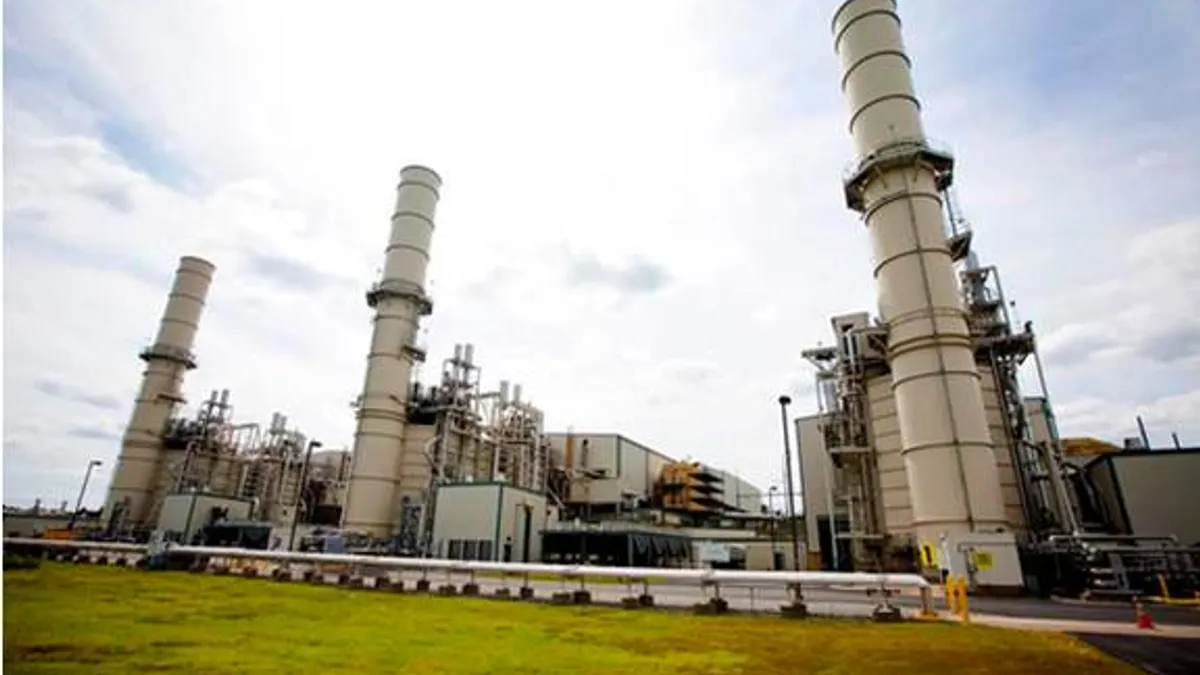Dive Brief:
- An infrastructure update issued by the Federal Energy Regulatory Commission showed more than 100 new or expanded gas-fired units were brought online last year, adding about 8,700 MW of new capacity. That's a significant bump over 2015 figures, which had about 75 new or expanded units adding 6,400 MW.
- While gas led led capacity additions, wind and solar were not far behind, each adding over 7,700 MW of utility-scale capacity last year. The report does not address growth in distributed generation.
- Growth in coal-fired power was minimal; FERC identified 3 new units for 45 MW of new capacity.
Dive Insight:
Federal power analysts say coal production and generation are expected to tick upward this year and next, but FERC's December infrastructure report, which summed up all of 2016 capacity additions, gives a clear view of the long-term trend expected.
Gas generation topped coal last year for the first time, producing about 34% of the United States' electricity this year, compared with 30% from coal. The U.S. Energy Information Administration expects those numbers will tighten slightly this year, to 33% and 31% respectively, but the overall trend is for natural gas to produce more power.
Total United States installed capacity includes about 25% coal, 43% gas and 9% nuclear. Solar energy makes up only about 2% of the country's installed capacity, but accounted for more than a quarter of new capacity installed last year. The same trend is visible for wind power, which makes up less than 7% installed capacity but had capacity additions last year similar to solar numbers.
Despite the stark differences in new capacity, coal energy is expected to remain the dominant fuel over the winter as well as experience a small resurgence this year and next.
The FERC report did not list growth in distributed generation, like rooftop solar, and critics say it misses some small utility-scale solar porjects as well. FERC identified 407 solar units installed last year, adding 7,750 MW of capacity. While unit-figures remained fairly constantly over 2015, only about 3,500 MW was installed that year.















